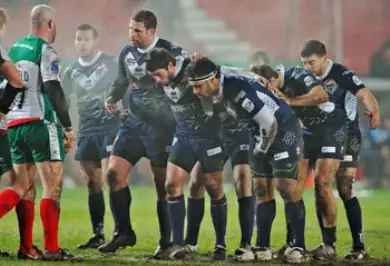Should contested scrums make a rugby league comeback?

Following the news from the NRL this week, where Sam Tomkins picked the ball up from a contested scrum like an old fashioned loose forward to score a try, an interesting conversation about contested scrums returning to the game has started to buzz around rugby league circles.
The NRL have also reminded clubs that packs can shove in the scrum, as long as the referee deems it safe.
“The rule is that it is permissible for forwards to push once a scrum has been correctly formed but if it moves appreciable distance to disadvantage of any one team before the ball is put in then the referee shall order the scrum to be reformed in its original position,” an NRL spokesman said.
“However, the practical application which is used by NRL referees is that both sides need to be bound and the ball put in and they can push.”
That is a welcome clarification of the rules. After the Parramatta Eels pack was destroyed by the New Zealand Warriors scrum for Tomkins’ try, they and other teams will certainly be maintaining closer concentration at scrum time.
For ‘proper’ scrums to return, though, there would might well be some alterations to how current positions on the field operate.
It is doubtful if many of the current crop of hookers would fancy striking for the ball in the middle of the front row. So would the loose forward, where the hooker packs down after all these days, become the new dummy half?
Loose forwards are often the people who pack down at hooker these days anyway, at least for attacking scrums, so that the dummy half can pass the ball cleanly off the floor at the rear of the scrum.
A scrum is there to give outside backs more room to work attacking moves. It is meant to be a sort of halfway house on the way to a full penalty.
What tends to happen more often, however, is that forwards stand in the back line, and we end up with a simple one-out run, just as we would get from a standard play-the-ball.
It often strikes me that this is an opportunity lost by coaches and halfbacks to work some interesting and effective moves with the extra space available. Perhaps the mantra of speed at all costs has left creative thinking a little lacking.
But before we start dreaming of the halcyon days of packs shoving each other around, we also need to consider some other issues.
Contested scrums sap the energy of players. While rugby union props may well be a figure of ridicule for many of us, their specialist fitness and strength is tailored to their role as scrummagers. While some union props can actually catch, pass and run with the ball, the scrum saps so much energy, and requires so much strength, that they rarely get the chance to show any skills at all.
It is also worth remembering what scrums had become by the late 80s and early 90s, before refereeing interpretations helped to de-power them. Check out any old game from that era on Youtube, and you can see that the scrums often degenerate into violent heaps of players trying to inflict as much pain on each other as they can.
The ball was often thrown in at almost waist height by the scrumhalf, who would then have to scuttle back ten yards to flop on the ball which had been ‘hooked’ out of the back of the scrum. It was unedifying, and actually handed a disadvantage to the team with head and feed.
There are more issues the the deeper one digs with scrums. Safety being a major one.
If contested scrums make a return, how will modern players, who have, in all likelihood, never learned to scrummage, cope?
Proper binding and setting of a scrum can take ages. Will modern crowds tolerate that?
Players are certainly big and strong enough to handle scrummaging these days, but will they see learning proper technique as important enough to practice?
It might well be worth keeping an eye on how scrums develop over the next few months. With a little more original thinking, they might well become a platform for attacking play once more.
Part of rugby league’s appeal is its simplicity. It is pure rugby when compared to the reliance on set pieces and technique which we see in the other code.
Bring back too much raw push and shove and we could be opening a can of worms which we just do not need.
As a means of keeping teams ‘honest’, however, maybe the occasional shove, like the Warriors managed against the Eels this weekend, can be a nice variation.
Comments and discussion welcomed in the box below…